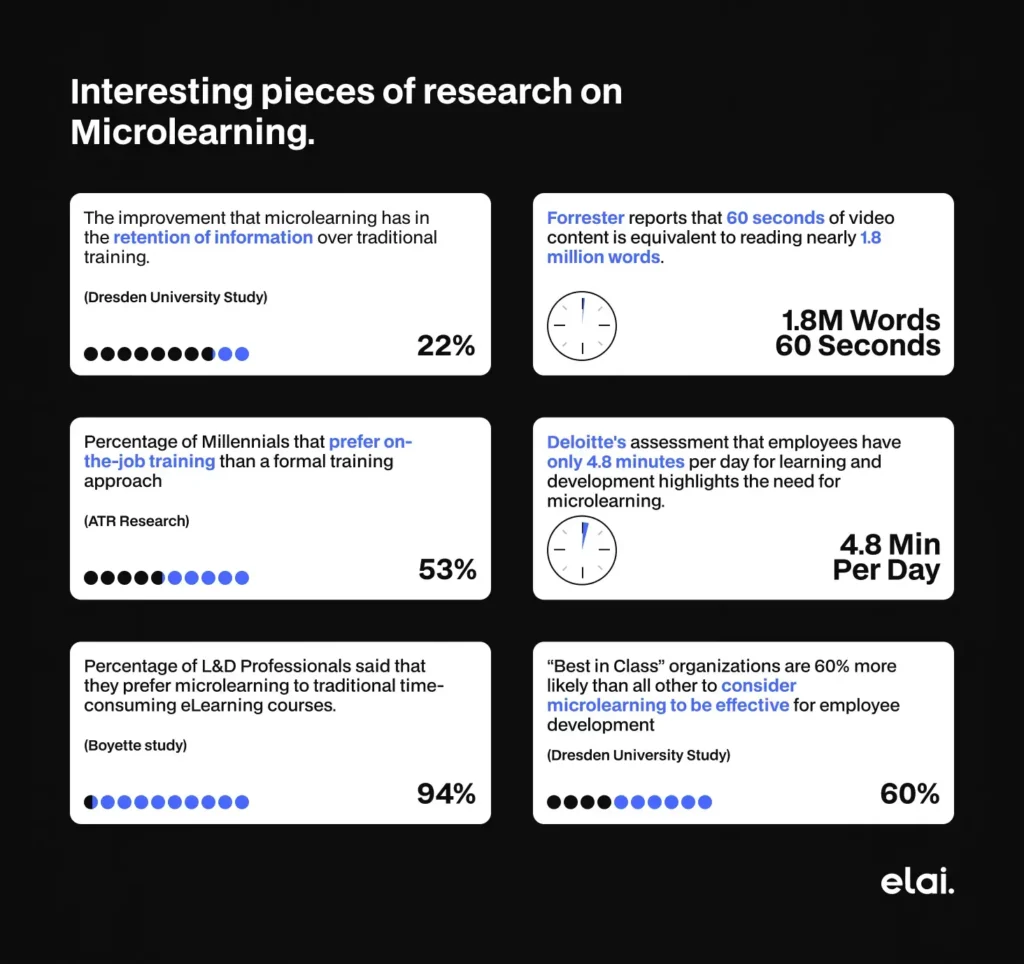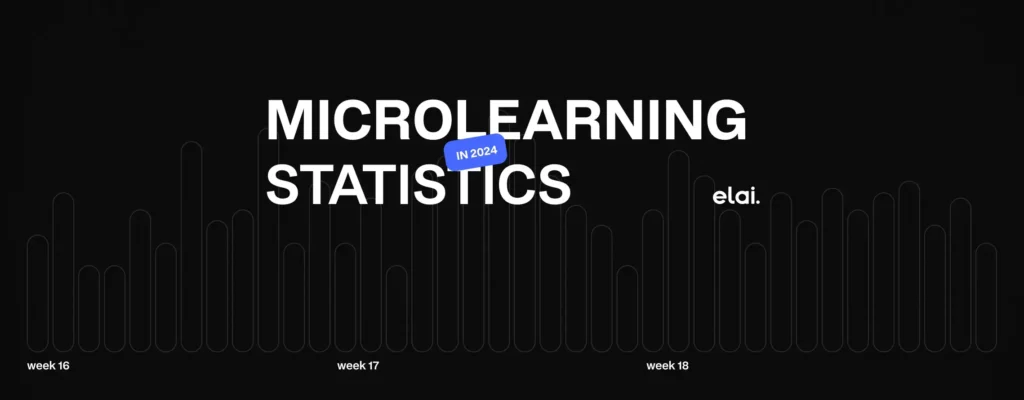Microlearning is growing as an influential force in education and professional development, transforming how people and businesses approach learning in the digital age. Compelling microlearning statistics demonstrating the effectiveness and rising popularity of this novel technique, which consists of brief, focused learning sessions, are in support. As we explore the area of microlearning, the data makes a compelling argument for its widespread adoption across industries and demographics in 2024.
One of the most startling results comes from Dresden University, which discovered that microlearning improves information retention by 22% above standard learning approaches. This considerable rise demonstrates the effectiveness of microlearning in ensuring that learners connect with the content and retain it for extended periods of time, thus improving the overall learning process. In 2024, this number is especially pertinent, indicating that microlearning will remain a crucial technique in tackling the difficulties of information overload and the need for effective learning solutions.

The power of visual microlearning
The importance of video content in microlearning cannot be overemphasized; Forrester reports that 60 seconds of video content is equivalent to reading nearly 1.8 million words. This data emphasizes the power of visual learning, proving that video-based microlearning is a highly successful training tool and the preferred material delivery method among learners. As video material is forecast to dominate internet traffic, the adoption of video-based microlearning is expected to accelerate until 2025, when it will become a major pillar of educational initiatives.
The main challenge of video-based microlearning is creating videos. This is where generative AI platforms come to the rescue. Platforms such as Elai.io allow you to create video-based animated learning content that is narrated by AI avatars. By creating the effect of human presence, these videos help achieve microlearning goals faster and without much cost.
In the modern workplace, Deloitte’s assessment that employees have only 4.8 minutes per day for learning and development highlights the need for microlearning. This technique fits perfectly into today’s busy work schedules, providing a practical and efficient alternative for ongoing professional growth. With the pace of work unlikely to slow in 2024, microlearning is an appropriate learning technique that meets today’s employees’ time limits and learning patterns.
Another important figure is Millennials’ preference for microlearning, with ATR Research reporting that 53% prefer on-the-job training to traditional formal education techniques. As Millennials and Generation Z become increasingly common in the workforce, their preferences will unquestionably influence future learning and development programs. With its adaptability and effectiveness, microlearning is well-positioned to meet these expectations, meaning its growth and popularity will continue to climb in 2024. In 2022, the worldwide market for microlearning was valued at approximately USD 1,557.48 million and is projected to grow at an annual rate of 18.02%, expected to reach around USD 4,207.92 million by the year 2028
Furthermore, according to Arist, microlearning cuts the cost of creating courses by half and triples the development speed. The benefits of microlearning statistics are especially essential as organizations look for better ways to bridge the gap between learning and application in the workplace. As firms traverse quickly changing industries in 2024, microlearning’s capacity to improve learning transfer will become more crucial.

Effectiveness of microlearning
According to Boyette, 94% of L&D professionals favor microlearning over standard e-learning courses, demonstrating its effectiveness and popularity. Students’ positive responses to microlearning highlight its role in capturing and holding their attention, which has led to this significant preference. As learning and development techniques evolve in 2024, microlearning will play an important role in influencing educational content and methodologies.
The expected generational shift in the workforce, with PricewaterhouseCoopers estimating that Millennials will make up half the global workforce, emphasises the value of microlearning. This generational shift highlights the importance of learning tactics that align with the habits and preferences of younger employees. As we approach 2024, the demand for microlearning is expected to rise, indicating its alignment with the needs of a dynamic and varied workforce.
The Aberdeen Group’s research on microlearning and organizational effectiveness emphasizes its strategic value. Organizations rated as “Best in Class” are 60% more likely to believe microlearning is helpful for staff development, indicating a link between microlearning adoption and business performance. As firms aim for excellence in 2024, including microlearning in their development strategies will be critical to cultivating a talented and adaptive workforce.
Why is microlearning trending?
The trend toward shorter attention spans, with reports indicating a considerable decrease over the last decade, makes microlearning a preference and a requirement. Its brief and focused sessions are ideal for a population with information overload. In 2024, microlearning’s capacity to offer engaging and effective knowledge in small bursts will be important in grabbing and maintaining learner attention.
Finally, technological trends influencing learning and development, such as the growing preference for video over text, are in sync with microlearning’s methodology. With 75% of tech-savvy employees prefer watching videos rather than reading documents or web articles, microlearning’s concentration on multimedia content is an ideal fit. As technology advances, the adaptability, and alignment of microlearning with digital consumption habits will ensure its continuous growth and significance through 2024 and beyond.
To summarize, microlearning is not a passing fad, but a significant shift in the learning and development landscape. Its statistics and benefits demonstrate its effectiveness, efficiency, and compatibility with current learning preferences and technology trends. As we approach 2024, microlearning is expected to become even more integrated into educational practices, demonstrating its versatility and the changing demands of learners and companies alike.
Microlearning, with its short and focused learning sessions, is an innovative strategy for transforming personal and organizational learning landscapes. This approach, designed to achieve specific learning outcomes, uses brief segments of content delivery to improve efficiency and engagement in learning processes. Microlearning Statistics 2024 show the importance of such methods in today’s educational field.

